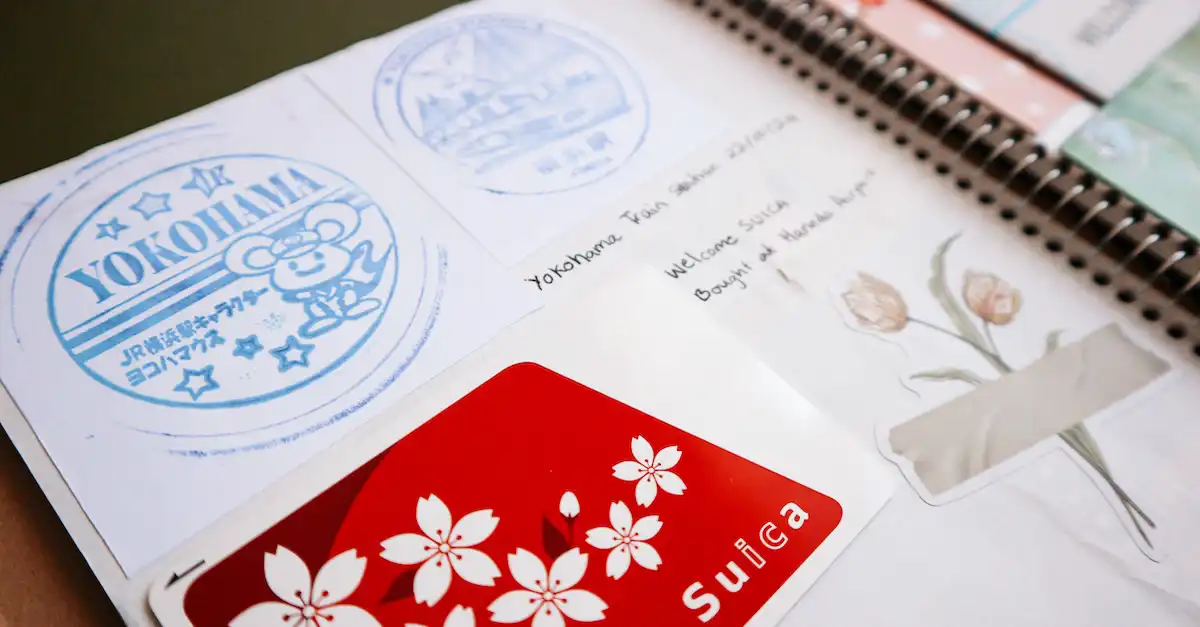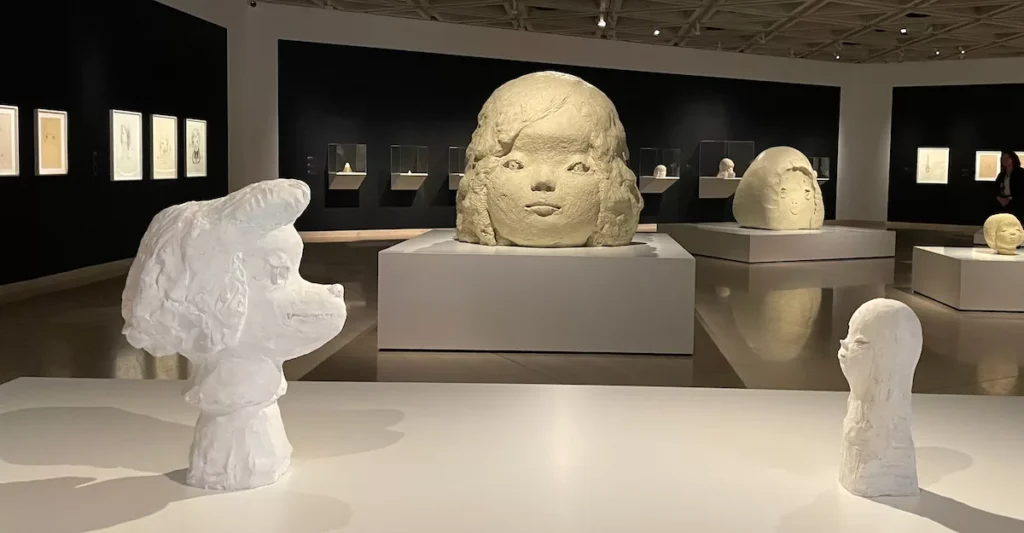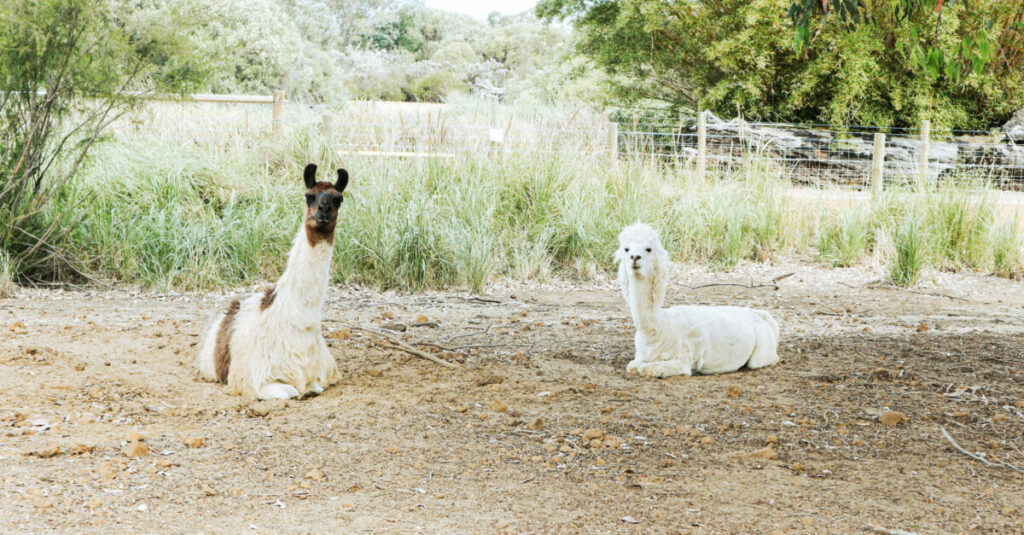During my second trip to Japan, I discovered the joy of collecting eki stamps—cute rubber and ink stamps found at train stations across the country. In a world of digital apps where everything is pretty much on your smartphone, the ability to engage in a manual creative activity is a breath of fresh air. As a stationery lover, eki stamps are right up my alley! Sometimes I think of it as a treasure hunt with a physical memory as the reward.
So, what are eki stamps?
‘Eki’ translates to ‘station’ in Japanese, so an eki stamp is essentially a station stamp (mainly a train station). These rubber stamps are usually found at or near the ticket gates of JR (Japan Railways) stations, though some private railways have them too.
Each stamp highlights its location and often features an illustration that represents the local area—anything from famous landmarks and mascots to historical references or regional food. It’s a fun way to mark where you’ve been and pick up a tangible little souvenir from your travels.

How I found eki stamps
As a newbie to this hobby, the first place I heard about stamp collecting in Japan was through a suggested post on Facebook. While planning my trip, Facebook kept recommending groups to check out, and that’s how I stumbled upon the one listed below. It looks like the algorithm got it right this time!
Japan Stamp Rally Community on Facebook
To my absolute delight, there is a whole community of people dedicated to the art of stamp collecting in Japan on Facebook. This group is an invaluable resource for keeping up-to-date with current stamps and where to find them.
Funakiya’s Travel Stamp Book Website
While searching for eki stamp locations, I often used this website and took screenshots of the stamps I wanted to find. Although some of the stamps listed may no longer be available, it’s still a great starting point and resource.
Pure luck
After discovering that stamps were a thing, I started keeping an eye out for them everywhere I went. Some were easy to spot and sitting in plain sight, while others were more of a blink-and-you’ll-miss-it situation.
Asking the information counter attendants
At some stations—like Urakami in Nagasaki—you’ll need to ask for the stamp at the JR ticket counter, and a staff member will bring it out for you. I also found that at smaller regional stations, such as Obi in Miyazaki, there can be two or more eki stamps available. This is often because some of the nearby stations on the line are unmanned, so their stamps are kept at a staffed location.
Phone apps
StampQuest is a great app that features a map of stamp locations along with previews of what the stamps should look like. I say “should” because sometimes the stamp designs have changed since the time of publication. Still, it’s a fun and handy app to have if you’re on the hunt for eki stamps.
Other stamp finds: Tourist Information Centres
While eki stamps are a fun and rewarding way to mark your transportation route, they’re definitely not the only stamps you’ll come across in Japan. Many tourist information centres—especially in popular destinations—have their own collection of stamps available for visitors. Similar to eki stamps, these often feature local landmarks, mascots, or cultural motifs specific to the region.
Some of them are surprisingly large (like the one I found in Toba), so if you’re using a smaller notebook, you might want to carry a larger one or even a few spare sheets of paper just in case. The stamps are usually placed on the counter or in a clearly marked stamping station, but if you can’t spot them, just ask the staff. In some cases, they’ll bring out extra designs that aren’t left out on display.
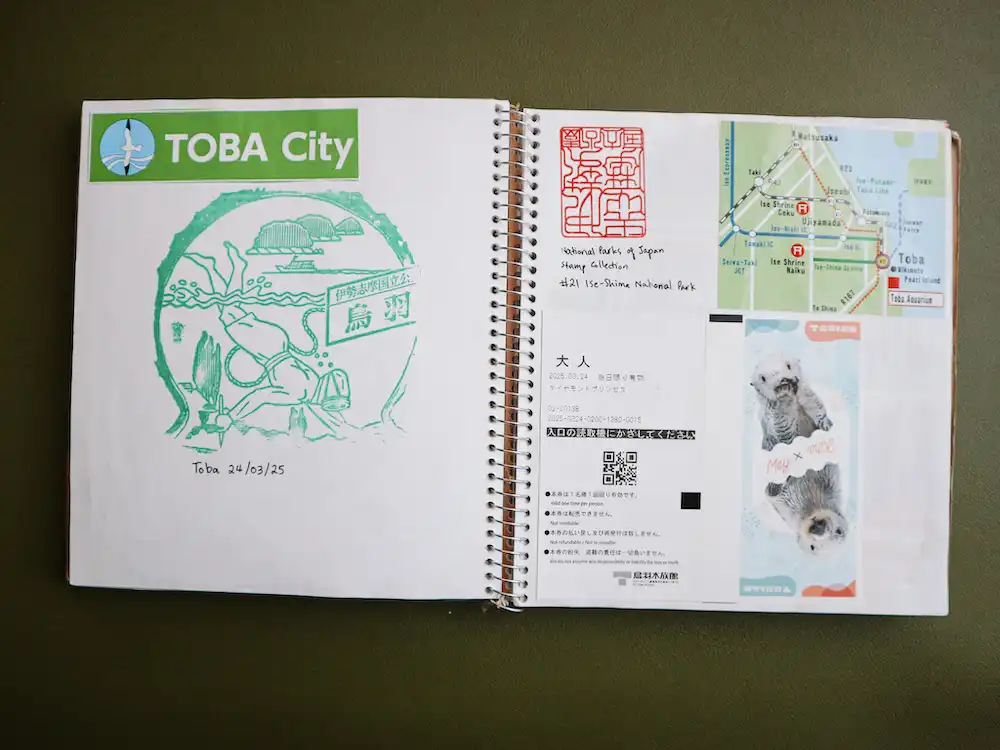
Sacred stamps in Japan
Another beautiful form of stamp collecting in Japan is goshuin—sacred handwritten temple and shrine seals, obtained as a record of worship. These are quite different from the rubber stamp style of eki or tourist stamps. Goshuin are calligraphic inscriptions created by monks, typically featuring the temple’s name, the date of your visit, and a red ink seal.
They’re collected in a special book called a goshuin-chō, which you can purchase at most temples and shrines that offer them. One well-known example is the Asakusa Shrine, which has a beautifully designed goshuin that’s popular with visitors. Although I haven’t started collecting goshuin myself, I’m fascinated by their artistry and spiritual significance. It’s definitely something I’d love to explore more on my next trip.
Common places to find stamps in Japan
A peek into my stamp collection & travel scrapbook
Here’s a glimpse into my Japan stamp-collecting notebook. Initially, I only intended to document stamps, but many of the pages remained too bare for my liking. So, I began adding other items like train tickets, maps, and postcards (another travel collecting obsession), turning it into more of a scrapbook of memories.
The book I’m using is Croquis by Maruman, which is actually a sketchbook, so the pages are a bit too thin for stamp ink. You can see on some pages where the stamps bleed through and ruin the ones on the other side.
Sometimes, the stamp ink pads at the stations and attractions are dry or old, making the stamp faint. I’ve read in forums that some collectors bring their own ink pads, but I’m personally not too keen on carrying one along with all the other stuff I need to haul around. Plus, I don’t want to ruin the intended colour of the rubber stamps.
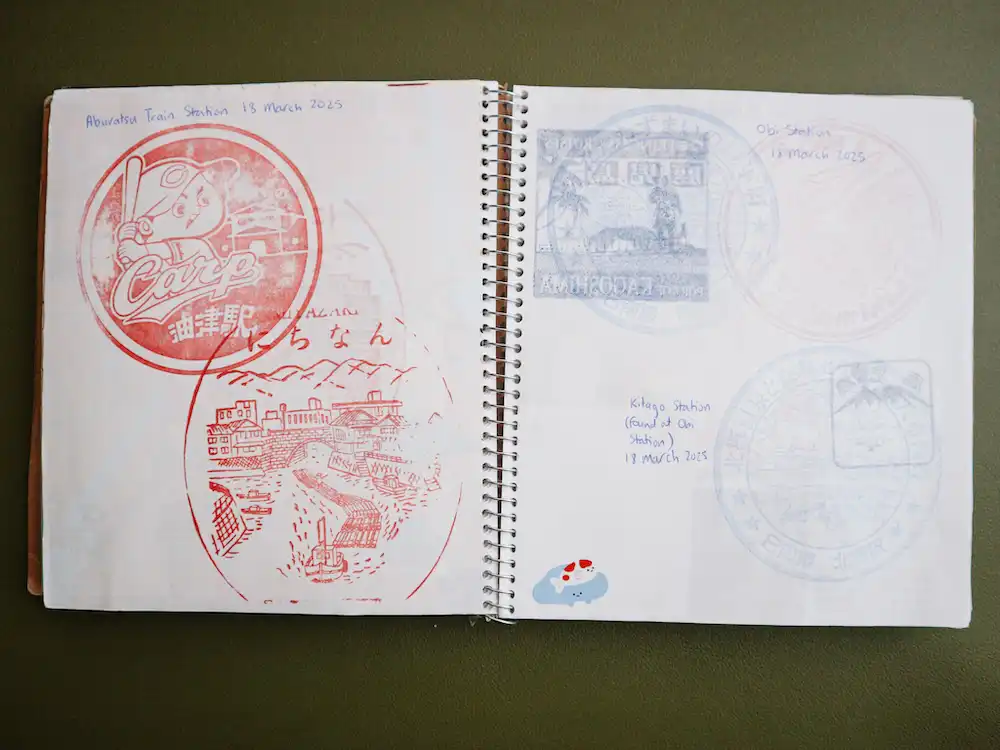
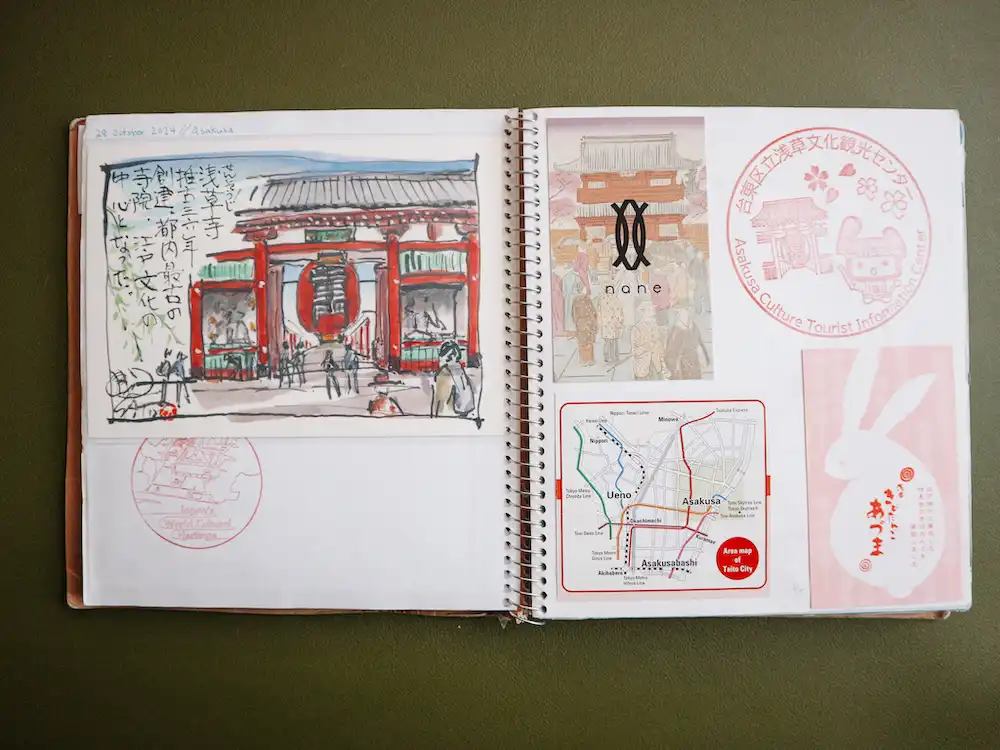
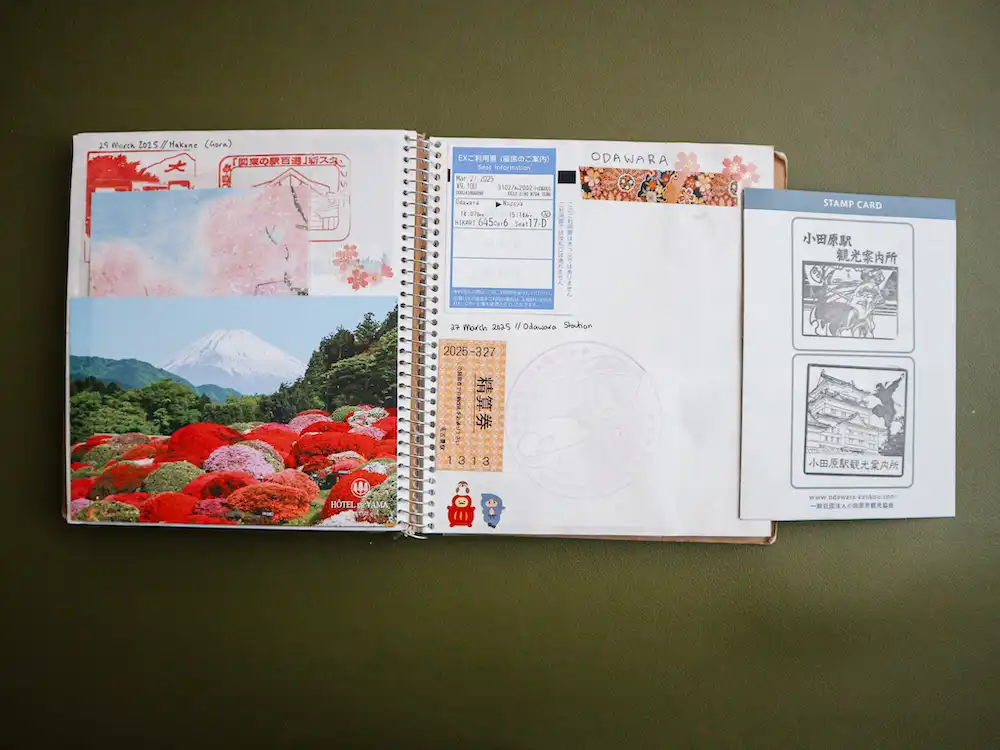
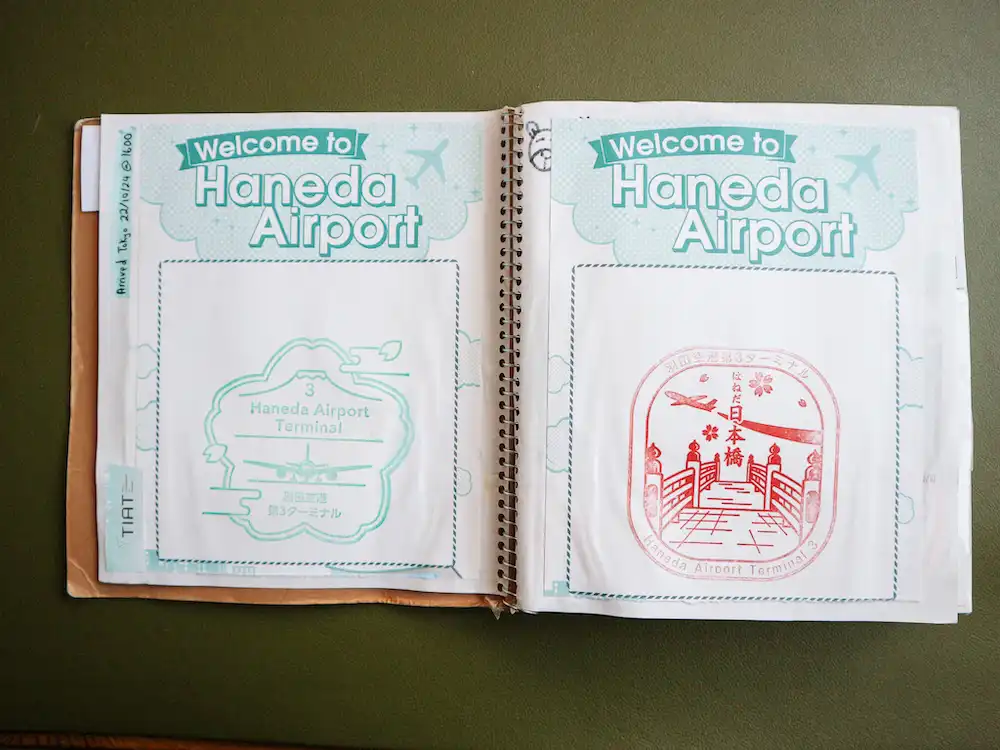
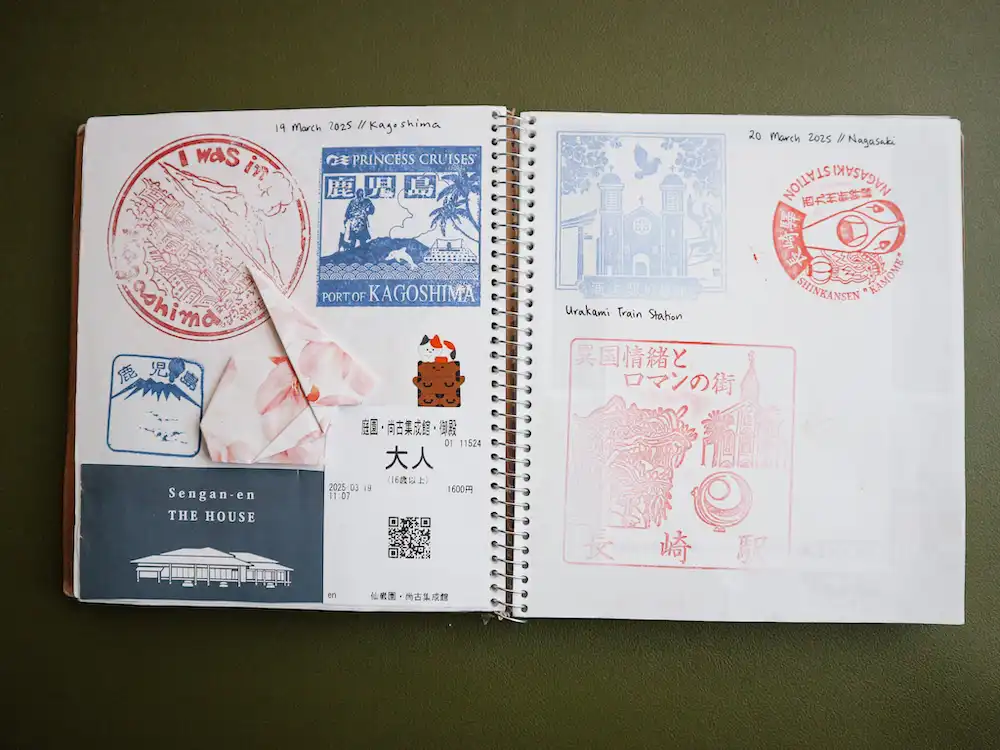
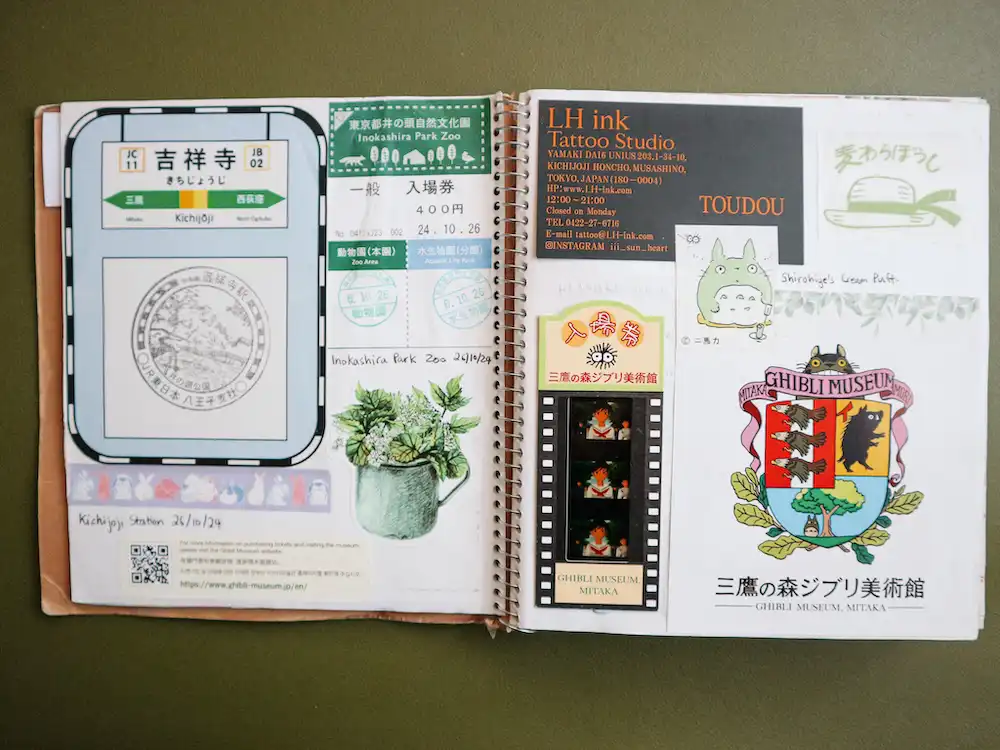

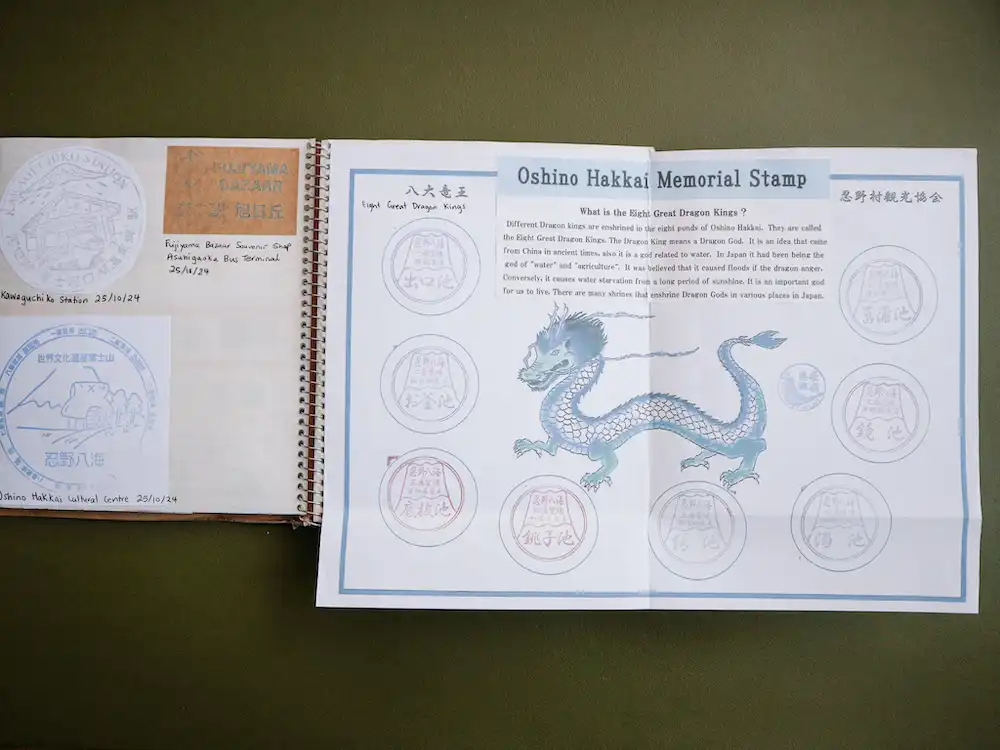
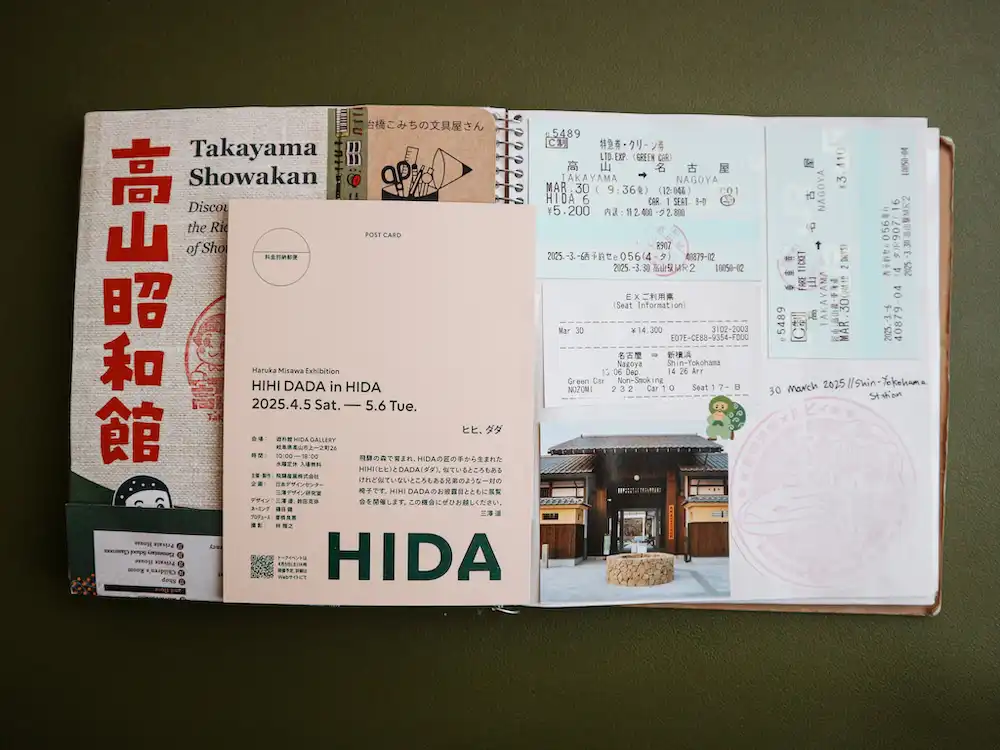
Final thoughts
I feel like I’ve barely scraped the surface of collecting stamps in Japan. Just from the last two trips alone, my notebook’s already nearly full, but somehow, there’s always room for one more stamp (and another roll of washi tape).
What started as a fun side thing to my travels has turned into a little creative outlet. Stamps, stickers, ticket stubs, and paper scraps—everything finds a home in my notebook. It’s messy, colourful, and a bit chaotic… but it makes me happy.
So if you’re the kind of person who finds joy in stamps and stationery, you might find yourself falling into this rabbit hole too. Consider yourself warned.
